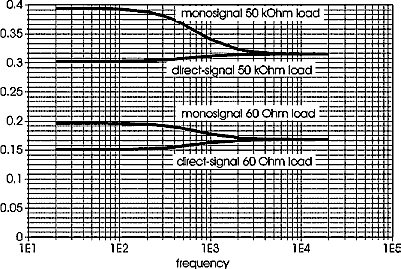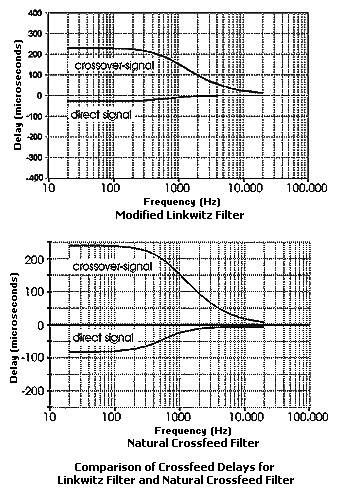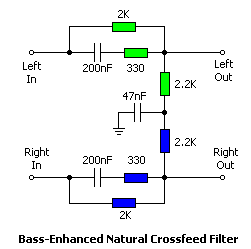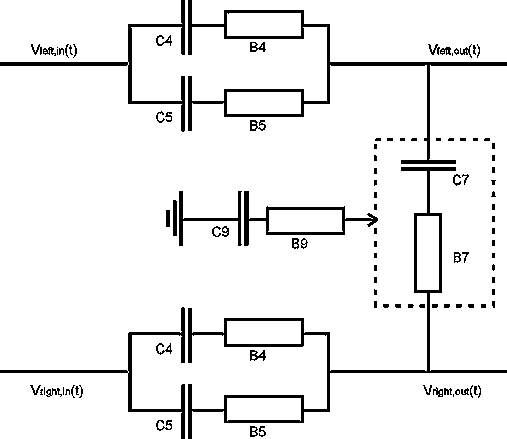
Enhanced Bass Natural Crossfeed
Enhanced Bass Natural Crossfeed - By Jan Meier, Editted By Dan Ward.

If you have an amplifier with a mono-switch, then here is a little experiment: listen to a stereo recording (by headphone) in stereo mode, and then press the mono-button and watch the bass. If you hear the same way I do, then you will notice that the bass suddenly seems to have weakened - it has become less pronounced. The effect is similar to that what is heard with a crossfeed filter, only much stronger. Listening in mono does introduce cancellation of low frequencies, but there is also cancellation higher frequencies (which is generally is even stronger since, with normal stereo recordings, low frequencies are more in phase). With the crossfeed activated, a weak cancellation will only be present at low frequencies, but at all frequencies, the sum of the sound pressures at both eardrums always equals the sum of the pressures in stereo mode!
At first I also wondered about the apparent loss of bass, but actually, it is this unnatural, larger then life-size, uni-directional bass, that counts for most of the annoying effects of headphone listening. I know, the crossfeed sound is nothing for a bass-freak. One should not expect a punchy bass, only a relaxation of the sound. It's like listening to loudspeakers - a balanced speaker does not jump at you at first hearing but is rather colourless/neutral/unobtrusive. The rewards come while listening for longer periods of time. A good speaker does not fatigue, and this exactly is the strength of the natural crossfeed filter.
To add bass or not to add bass....that is the question. I believe that most bass-losses are due to psychoacoustic effects, but after thinking it over more carefully, enhancing the bass response of the natural crossfeed filter could be legitimate, because headphone sound is optimized without using crossfeed. If there really is a psychoacoustic effect (a uni-directional bass is unnatural and I believe that, with headphones, this emphasizes its existence), then the effect has been (unconsciously) corrected for in the sonic design of the transducers.

Figure 1
The crossfeed design by Siegfried Linkwitz includes a bass boost to compensate for low frequency cancellation. Figure 1 is a graph of the frequency response of both the direct-signal and of a mono-signal that is given on both signals simultaneously. Responses were calculated for a 60 Ohm load (such as headphones) and for a very high output load (e.g., a headphone amplifier).

Figure 2
As with the natural crossfeed filter, the direct signal with the Linkwitz filter shows a signal loss at lower frequencies, (-1.0 dB at 60 Ohms, -0.35 dB at 50k Ohms). However, more important is that a mono-signal at frequencies below 700 Hz is increased by up to 1.3 dB at a 60-Ohm load and up to 1.9 dB (!) at 50k Ohms. The delay times for the Linkwitz design (figure 2) are fairly natural, as the crossfeed signal has similar filter frequencies and thereby should have similar delay times as the natural crossover filter.

Figure 3
I designed a modified version of the natural crossfeed filter that has a frequency response very similar to the Linkwitz filter. It can be found in figure 3. The crossfeed level is medium. It easily can be tested between a CD-player and headphone amplifier (there is no insertion loss). I guess it sounds very similar to the Linkwitz filter, but is a little bit easier to realize. I have never implemented this Linkwitz equivalent, being fully satisfied with the original natural crossfeed filter.
The Linkwitz equivalent can be substituted for the filter in my headphone amplifier design. The bass EQ switch (S1) was not intended to compensate for any apparent loss of bass due to the crossfeed. It simply should compensate for the natural roll-off of the transducers. Such filtering is nothing new. With my headphones, I use position "3." In this position, only the very lowest frequencies are amplified. Even with the Linkwitz equivalent, it could be very nice to keep the bass extension switch. Since it can be switched off, it will not hurt and the extra work/costs are little. It is, however, a matter of personal taste. Hi-fi purists do not like unnecessary equalization and might want to leave it out.

Figure 4
With the Linkwitz equivalent filter, it is not possible to set the crossfeed level with a 2 x 6 switch. Not only do the resistors and capacitors in the two outer networks (Z1) have to be switched, but also the central capacitor to ground. A possible option is to use a 3 x 4 switch (see figure 4) and leave the first two crossfeed positions out (they have a very weak effect, and I never use them).

Figure 5
To customize the time delay and amplitude profiles of the Linkwitz equivalent, download the circuit simulation spreadsheets below (in Quattro Pro 1 and 3 formats). Change the values B4..C9 at the first page according to figure 5 and the corresponding lines in the pictures will change. Similarly you can change the values in D4..E9 for a direct comparison of the different options.
Download circuit simulation spreadsheet (in Quattro Pro 1 and 3 formats)
Yesterday, I did some listening with popular music with heavy bass using
the original natural crossfeed filter. The bass in these recordings was
more "centered". As expected, I could not/hardly notice any
specific loss of bass. I present the Linkwitz equivalent design as an
example of how the various filters can be tested to personal taste, by
putting them between a CD player and a power/headphone amplifier, before
eventually building the headphone amp project.
Natural Crossfeed & Enhanced Bass Natural Crossfeed, By Jan Meier